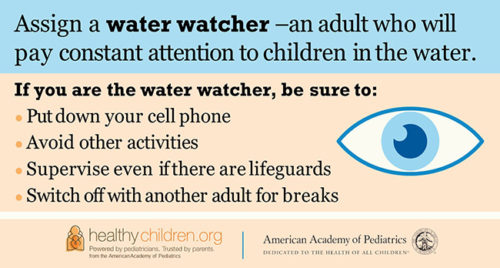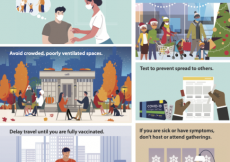July 6th, 2022
Writing on her excellent blog about water safety, San Diego pediatrician Jaime Friedman keeps her eyes peeled on not only the swimming pool during this hot summer:
[W]ater safety is not just about the pool or about swimming. Babies and toddlers can drown in just 2 inches of water. That means a toilet or a dog bowl can also be a source for drowning. Furthermore, toddlers wander and are curious, so any body of water is a safety risk even during non-swimming times. That means water safety is everyone’s responsibility all year when young children are around.
According to the Centers for Disease Control and Prevention, children are most susceptible to drowning:
Children ages 1–4 have the highest drowning rates. Most drownings in children 1–4 happen in swimming pools. Drowning can happen anytime, including when children are not expected to be near water, such as when they gain unsupervised access to pools. Fatal drowning is the second-leading cause of unintentional injury death behind motor vehicle crashes for children ages 1–14.
Certain factors make drowning more likely:
• Not knowing how to swim or being a weak swimmer. “Participation in formal swimming lessons can reduce the risk of drowning among children and young adults.”
• Absent or defective pool fencing. “A four-sided isolation fence which separates the pool area from the house and yard reduces a child’s risk of drowning by 83% compared to three-sided property-line fencing (which encloses the entire yard, but does not separate the pool from the house).”
• Lack of close supervision. “Drowning can happen quickly and quietly anywhere there is water, especially to unsupervised children. It happens in lakes and oceans, pools, bathtubs, and even buckets of water. Drowning can occur when lifeguards are present.”
• Age and Location. “Among infants under 1 year old, two thirds of all drownings occur in bathtubs.2 Most drownings happen in home swimming pools among children ages 1–4.2 More than half of fatal and nonfatal drownings among people 15 years and older occur in natural waters like lakes, rivers, or oceans.”
• Not wearing life jackets. “The U.S. Coast Guard reported 613 boating-related deaths in 2019—79% of these deaths were drowning related, and of those who died from drowning 86% were not wearing life jackets.”
• Alcohol. “Alcohol impairs balance, coordination, and judgment, and it increases risk-taking behavior. Among adolescents and adults, alcohol use is involved in up to 70% of deaths associated with water recreation, nearly 1 in 4 emergency department visits for drowning, and about 1 in 5 reported boating deaths.”
• Medical conditions and prescription medicines. “People with seizure disorders such as epilepsy are at a higher risk of fatal and nonfatal drowning than the general population. Drowning is the most common cause of unintentional injury death, with the bathtub being the most common site of drowning for people with seizure disorders. Other medical conditions such as autism and heart conditions are associated with a higher risk of drowning. Certain medications can increase the risk of drowning, especially psychotropic medications commonly prescribed for depression, anxiety, bipolar disorder, schizophrenia, and other conditions.”
Dr. Friedman reviews the pool rules for everyone:
1. Nothing replaces constant supervision around water. Any adult in charge of watching young children in and around the pool needs to be aware of where the children are at all times.
2. All weak swimmers should be under “touch supervision” while in the water. This means keeping babies and toddlers within arms reach at all times.
3. Use only Coast Guard approved life jackets for safety and flotation. Do not use arm or other inflatable “floaties”.
4. All pools should be surrounded by a 4-sided fence, 4 feet high, with a self-latching gate.
5. While children don’t routinely become strong swimmers until after 4 years old, some studies show that swim lessons between 1-4 years of age can reduce drowning. However, this does not replace adult supervision and the use of a flotation device.
6. Any adult supervising swimmers should learn CPR and should remove all distractions, including phones. Always designate a water watcher.
7. Don’t forget that drowning is often silent. Look for a child who is still, not using their legs or hyperventilating.
8. Always empty portable or toy pools when finished with them.
9. Remove toys from the swimming pool to prevent curious toddlers from trying to go after them.
Here are Dr. Friedman’s rules for everywhere else:
1. Never leave a baby or toddler alone in a bathtub. Ever. Even for 1 second.
2. Keep all doors locked and watch young children closely if there is any type of pool or water source outside the house. 65% of drownings occur in the family pool and most victims are being supervised and were last seen in the home. (Consumer Product Safety Commission)
3. Keep all buckets and water toys empty when not in use.
4. Always use a flotation device at all times (vest) while boating.
5. Watch babies and toddlers around dog bowls.
6. Use lid locks for toilets.
Read more water safety tips from the AAP here, and on The PediaBlog here, here, here, here, here, and here.
Read “What Parents Should Know About Drowning and Dry Drowning” on JAMA Pediatrics Patient Page here.





































